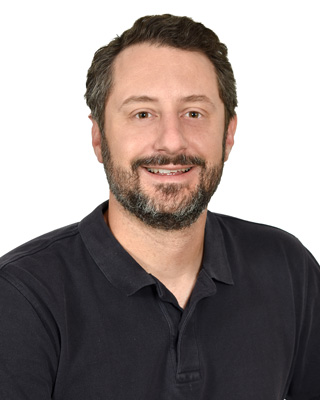Home > On-Demand Archives > Talks >
Active Noise Cancellation for Headphones and Vehicles
Nikos Zafeiropoulos - Watch Now - DSP Online Conference 2024 - Duration: 50:55

Active Noise Cancellation of broadband noise has now become a standard audio feature for TWS headphones and it is also getting spread in the automotive. In this workshop you will learn how to generate FIR filters using adaptive algorithms with recorded data from a headphone and create a hybrid fixed filtering ANC. We will introduce multichannel ANC for cars and explain the same methodology on how to apply in a vehicle.
This guide was created with the help of AI, based on the presentation's transcript. Its goal is to give you useful context and background so you can get the most out of the session.
What this presentation is about and why it matters
This workshop walks through theory and practical techniques for active noise cancellation (ANC) in two important product domains: headphones (TWS/over-ear) and automotive cabins. It ties basic acoustic principles to concrete signal‑processing implementations: feedback and feedforward controllers, hybrid ANC, adaptive algorithms such as filtered‑x LMS, and practical engineering considerations for multichannel vehicle systems.
Why this matters: ANC is now a standard differentiator in consumer audio and is emerging in vehicles to improve perceived quietness and comfort. For engineers, ANC is a multidisciplinary problem — mixing acoustics, control, DSP, measurement, and real‑time constraints — so the talk is useful for understanding how algorithmic choices map to measurable results, complexity, and integration tradeoffs.
Who will benefit the most from this presentation
- DSP engineers and acoustics engineers who design ANC systems for headphones or vehicles.
- Students and researchers learning practical adaptive filtering and multichannel real‑time processing.
- System integrators and firmware developers who need to understand computational and integration constraints (latency, sampling, block vs. time‑domain, multichannel mapping).
- Product managers who want to appreciate the tradeoffs between passive isolation, fixed filters, adaptive filters, and system cost/complexity.
What you need to know
To get the most from the presentation, be comfortable with these core topics:
- Linear systems and convolution: how signals pass through acoustic/analog/DSP chains; modeling with impulse responses and transfer functions.
- FIR and IIR filters: basic structure, stability, and why IIR biquads are often used for compact feedback controllers.
- Adaptive filtering basics: LMS and normalized LMS (NLMS) concepts, and the idea of sample‑by‑sample coefficient updates driven by local error signals.
- Filtered‑x LMS (FxLMS): the LMS update modified to account for the secondary path. The filtered reference is required because the control signal is filtered by the loudspeaker‑to‑mic path before affecting the error microphone.
- Frequency‑domain methods: block (FFT‑based) LMS and subband approaches, why they reduce computation and can speed up convergence.
- Acoustics basics: standing waves (nodes/antinodes), near‑field vs far‑field, and the difference between structural and airborne transmission in vehicles and headphones.
A couple of very short, useful equations (informal): the total pressure at a sensor is the sum of primary and secondary contributions, so cancellation aims for
$p_{tot}=p_{primary}+p_{secondary}$, where the goal is $p_{secondary}\approx -p_{primary}$.
In feedback/control notation you will see sensitivity‑type expressions. A compact form is
$S=1/(1+G)$,
where G represents the loop gain (controller times secondary path). Understanding how gain and phase shape S helps reason about bandwidth, stability margins and the inevitable tradeoffs (e.g., performance vs. robustness).
Glossary
- Primary path: the transfer function from the noise source (or reference microphone) to the error microphone where we measure residual noise.
- Secondary path: the transfer function from the ANC output (loudspeaker) to the error microphone; must be measured or modeled for adaptive algorithms.
- Feedback ANC: controller only uses an internal/error microphone and the loudspeaker — effective at low frequencies and robust when mic/speaker are close.
- Feedforward ANC: uses an external/reference microphone to predict incoming noise and drive the canceling speaker; typically wider bandwidth.
- Hybrid ANC: combines feedforward and feedback to gain the benefits of both approaches.
- FxLMS (filtered‑x LMS): adaptive algorithm that filters the reference signal through an estimate of the secondary path before computing LMS updates.
- Fast‑block/FFT‑based LMS: frequency‑domain implementation that updates long filters efficiently via block FFTs.
- Subband methods: split the signal into bands (filter banks) to reduce computation and enable band‑dependent adaptation settings.
- Stability margin / phase margin: control concepts describing how close a feedback loop is to becoming unstable; important when designing feedback controllers with IIRs.
Final note — why watch
Nikos blends historical perspective, practical measurement advice, and algorithmic detail in a way that connects theory to working products. Expect clear explanations of why different ANC architectures are chosen in headphones vs cars, concrete measurement items (primary/secondary paths), and an honest discussion of computational challenges for multichannel automotive ANC. If you want a pragmatic bridge between LMS theory and real product design (including integration challenges), this session will repay your time.
Enjoy the workshop — it’s a useful mix of signal processing fundamentals, measurements, and real‑world engineering tradeoffs.

